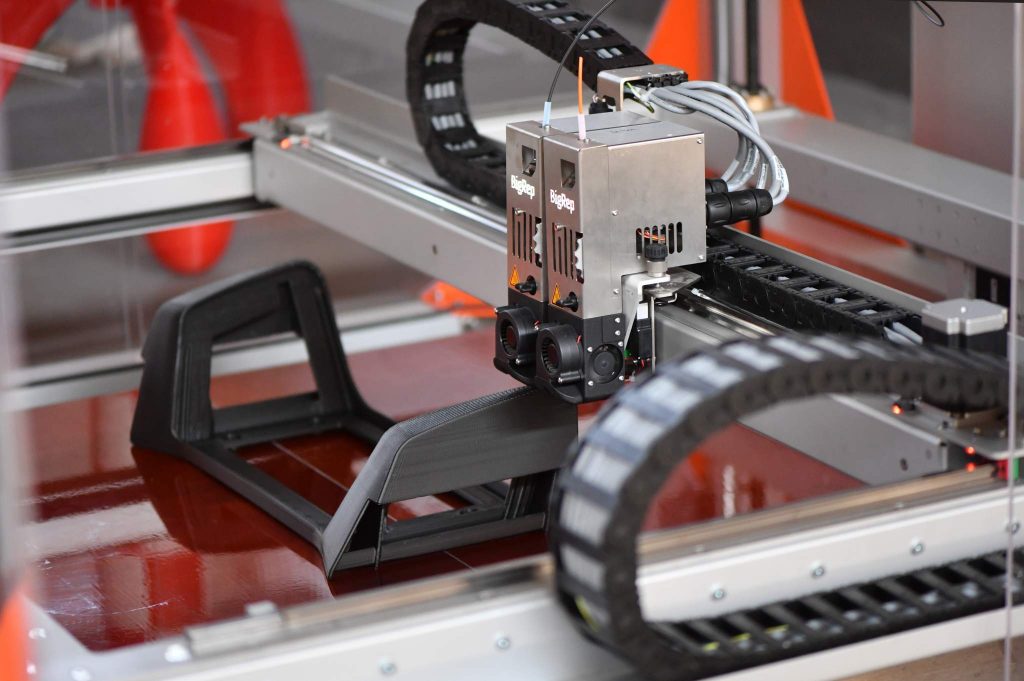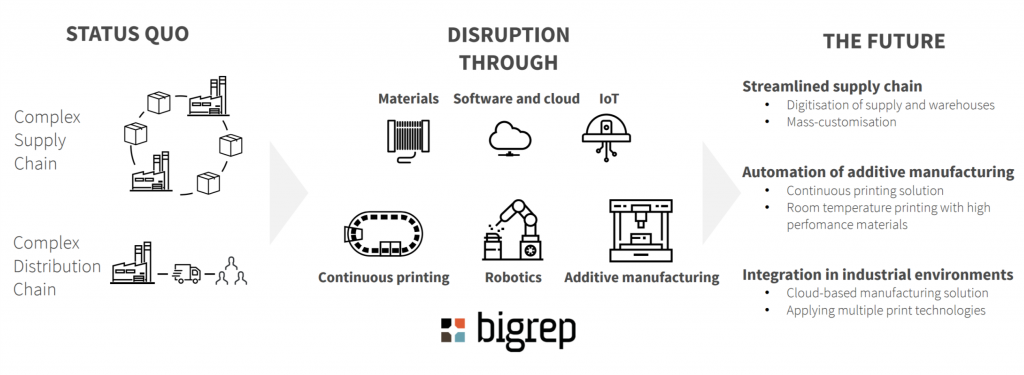This is a guest post in our series looking at the future of 3D Printing. To celebrate 5 years of reporting on the 3D printing industry, we’ve invited industry leaders and 3D printing experts to give us their perspective and predictions for the next 5 years and insight into trends in additive manufacturing.
René Gurka is the CEO and co-founder of BigRep. Headquartered in Berlin-Kreuzberg, with offices in Brooklyn and Singapore, he has been actively involved in the future of additive manufacturing together with his international interdisciplinary team for the last three years.
3D Printing: The Next Five Years – Industrial 3D Manufacturing is the Ultimate Goal
If you want to look at the future of 3D printing, it is worthwhile looking back in time; additive manufacturing has been around for about 30 years. But only in the past five years has it gained this big recognition. The promise was: everyone can print objects at home with a 3D printer and become a designer. “We wanted people to 3D print anything” said 3D industry pioneer Bre Pettis in 2013. But these high expectations have not been fully realized. Except for a few talented individuals, home use of 3D printers has not hit the mainstream. The reason is simple: most of us lack the necessary design and construction understanding to be able to use the devices productively, or the skills to create the necessary digital data at home.

Traditional Production will be Disrupted
The question arises that if this vision was wrong, what is the realistic development in next five years in 3D printing? For BigRep, the answer is clear: the focus will shift from individual users to industrial production. And by this I do not mean the production of prototypes, because this is already firmly established, especially with large manufacturers. The trend is rather towards automated additive production. 3D printing will become an integral part of industrial production and the traditional production process will change disruptively. This is made possible by the close interaction between software and cloud services, materials and robotics in additive manufacturing (AM). Similar to 3D printing, these have undergone an enormous development in recent years.
An essential prerequisite for the successful integration of AM into the industrial production process is that it is only implemented where its use can be justified, for example in the production of individualized objects in small numbers. Let’s take the automotive industry: elements such as car seats or fittings can already be produced according to the customer’s requirements with 3D printing.
AM is also very useful for objects that could not be produced with alternative production methods or only with a high time and financial investment. In the orthopedic or dental fields, but also in the reproduction of human organs, 3D printing is increasingly used. Manufacturers in other industries have also recognized the potential of AM. One example is Adidas. The sporting goods manufacturer is currently experimenting with the production of sports shoes, whose intermediate sole can be precisely matched to the body weight and the running style of the athletes by means of a novel 3D printing process and innovative materials.

Endless Printing: 3D Printing in a Continuous Process
All these application ideas sound great, and are without a doubt realistic. However, production time is still one of the greatest challenges faced by additive manufacturing. FDM, SLS or SLM technologies still require up to three days to complete a 3D printed large product. However, the industry requires significantly shorter production times, similar to those offered by conventional mass-production. Traditional production cannot afford flexibility in the time to delivery in order to keep margins high and prices low for consumers. In this case, the “SUSHI” project implemented by BigRep, in cooperation with the Netherlands Organization for Applied Natural Science (TNO), provides a clever solution. The system works like an assembly line: different print-heads are statically connected in a circle, only the belt below moves. Controlled by software, each individual print head receives individualized data and prints the assigned object simultaneously in 3D. A robot then loads the parts from the belt and sorts them. All this happens in a continuous rhythm, with no idling.
This intelligent combination of automation with additive production is particularly interesting for industrial customers in the automotive, mobility, mechanical engineering and aviation sectors. Endless printing paves the way for individualized mass production in 3D printing. In multi-material processing, for example in the production of printed circuit boards, individual work steps can be eliminated. In the spare parts business, completely new possibilities arise through fully automated 3D printing. For example, parts that are no longer available on the market, such as the broken clip of a no longer produced smartphone model, can be reproduced within a very short time. The end-user sends a photo of the part to the manufacturer via cloud service. An additional advantage for the manufacturer: the goods are “stored” digitally in the network and do not occupy expensive real estate. The construction industry will also benefit from these developments. With large-format printers such as our BigRep ONE, hollow molds can be produced, which can be used to add historical façade ornaments in the desired numbers.

Current Challenges
Fully-automated 3D printing will revolutionize industrial manufacturing over the next five years. This is also reflected in figures. By the year 2030, an annual growth rate of about 20 percent is predicted for the market. This represents an increase from currently 4.1 to about 40 billion US dollars – but the biggest growth comes from production, not prototyping. Looking at the trend curve for a new technology according to the Gartner Inc. model, industrial AM will have reached its production plateau in about two to five years.
To fully exploit this market potential, additive production will still have to be optimized in some basic ways. In addition to the speed problems already mentioned, the current challenges lie in a lack of innovative, printable materials. There is still a lot to do. The production process itself also presents the AM industry with new challenges. In the future, 3D printers need to be more efficiently integrated into production environments, and the digitalization level required for production in the intelligent factory is also not yet available in many 3D printers. Humans are still too strongly involved in the operation of the 3D printers; further automation is required.
We must master these challenges as quickly as possible, because one thing is certain: we are at the beginning of a technical revolution. AM technology will decisively influence the entire value chain in industrial production over the next five years. We should take advantage of this opportunity! Think Big- Go BigRep!
P.S: Good news for all non-professional designers: in TelAviv, a friend of mine with bots101.com is working on a solution. The computer uses artificial intelligence to create the design that I describe to him in words. We may still all get that 3D home printer Bre Pettis!
This is a guest post in our series looking at the future of 3D Printing, if you’d like to participate in this series then contact us for more information.
For more insights into the 3D printing industry, sign up to our newsletter and follow our active social media channels. Let us know your thoughts about this perspective on the future of 3D printing in the comments below.
More information about BigRep is available here.




